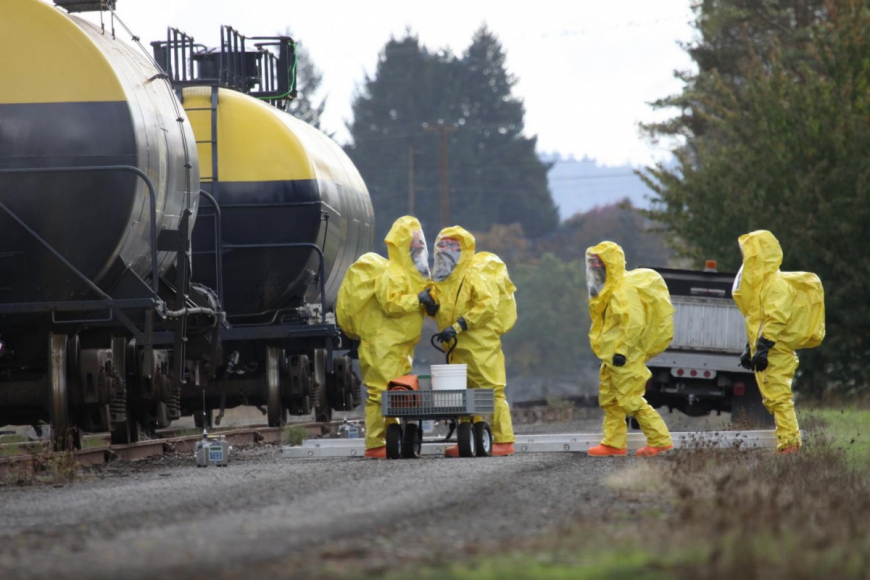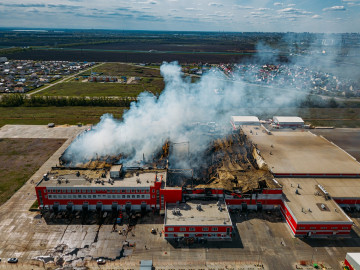Emergency incident disruptions can include a wide variety of responsibilities such as juggling response plans, site investigations, working with regulatory agencies, managing regulatory affairs and documentation requests, stakeholder engagement, and not to mention the cost of business. The piece you can control is your preparedness to respond. Below we offer five best practices of emergency response preparedness to help ensure you’re ready to respond and get things back to business as quickly as possible.
What is an Emergency Incident?
Before you can put together an emergency incident response plan, you need to be able to identify what an emergency incident is and the appropriate level of response. An emergency incident is any event that could lead to loss of, or disruption, to an organization’s operations, services, or functions. This disruption can come in the form of a pipeline or storage tank release, cyber-attack, train derailment, etc.
So, you’ve identified that you have an emergency, now what? First, you must determine your level of response or activation. The Federal Emergency Management Agency (FEMA) provides three distinct Activation Levels; knowing what level your emergency falls under will help you decide how to best respond.
Level Three: Normal Operations/Steady State
At this level, the emergency impacts a local scale with minimal threat or impact to public safety and the environment. Incident command is typically not established as the local site manager or operating authority can typically handle the situation.
Level Two: Enhanced Steady State/Partial Activation
A level two emergency impacts a local or regional scale and presents a medium threat or impact to public safety and the environment. In this situation, Incident Command should be established and the regional manager or a specialized internal authority should be involved.
Level One: Full Activation
An emergency at this level impacts a regional or national scale and presents a major threat or impact to public safety and the environment. At this level, a Unified Command must be established with local, regional, state, and/or federal level partners.
When activating an incident and forming Incident Command remember to manage your Span of Control. Span of Control is defined as the number of individuals or resources that a supervisor can effectively manage during the incident. FEMA recommends a Span of Control of three to seven people, with five being optimal. However, for critical and high hazard operations where life safety is a top priority, Span of Control is reduced to one to three people. Incident type, task nature, hazards, safety factors, and distance between personnel and resources all influence span of control considerations. You should never exceed the recommended Span of Control.
For more information and training on Incident command and Span of Control visit FEMA’s Emergency Management Institute site. ICS-100 and ICS-200 courses are available for free and provide an excellent introduction to the incident command system.
Best Practices for Emergency Incident Response Preparedness
1. Planning
Before an Incident
The best time to prepare for an incident is before it happens. Having a plan in place prior to an incident occurring will help you and your team respond quickly and effectively, getting operations back on track as soon as possible. To help you and your team prepare, follow the planning cycle:
- Form a planning team
- Understand Potential Situations: What type of incident are you most likely to respond to?
- Identify Potential Response Goals and Objectives: How will you manage that incident? What would your initial goals and objectives be?
- Develop a Response Plan: Document your response procedures in your potential incident. Define your mobilization and call out process and identify where you have equipment stationed.
- Review and Approve Plan: Have others outside your group review your plan and provide feedback prior to approval.
- Implement and Update: Revise and update your plan on a regular basis. This should be done at least annually or after every emergency response.
During an Incident
When an incident occurs, you can follow the same planning cycle to resolve the incident and get back on track. If you haven’t already, form a response team and start by understanding the current situation and how it might evolve or escalate. The proceed to understand and identify your goals and incident objectives this will then guide you through developing a response plan to meet those objectives. Once you have a plan prepared and approved, begin implementing that plan. You will have to frequently update and adapt your plan as the incident goals and objectives change.
2. Implementation of Internal Response Teams
Before an Incident
Create a team that is prepared to respond to incidents. This team should be comprised of members with specific expert knowledge and the ability to complete specialized emergency tasks. Members of the team should receive additional training, enabling them to work in higher-stress situations and empower them to make decisions should there be a disruption to the chain of command or members are unavailable.
Once this team is established, create a framework for response deployment. A comprehensive framework should include call lists, identify key contacts, and include region/location maps for both personnel and equipment.
Cross-train your team members, when possible, to create flexibility and adaptability. Integration of less specialized local staff throughout your infrastructure network can provide that crucial level of support in the initial hours of the incident while your specialized personnel are mobilizing.
During an Incident
When an incident takes place, efficient and honest communication is key. Response teams should enact the established communication plan and follow the command structure. Only command staff roles should be making decisions and giving directives, we’ll touch on this more in best practice five.
Don’t forget to plan ahead for secondary coverage/night shift to prevent burnout and keep your response efforts sustainable.
3. Partnership with Industry Experts and Regulatory Agencies
During an Incident, certain partnerships occur naturally through the formation of unified command. Partnerships can include:
- Local Agencies – Emergency Services (local/county emergency management, Fire/EMS, law enforcement)
- Local/Regional Incident Management Teams
- State Agencies
- Federal Agencies
- External investigation Committees (NTSB, FRA, etc.)
- Contractors and Consultants
When possible, consider incorporating these agencies and knowledgeable experts within your planning process, drills, and exercises. They will be involved in your incident and response so establishing these working relationships ahead of time can go a long way in facilitating an efficient response effort.
4. Drills and Exercises
Conducting regular drills and exercises is key to ensuring you are prepared as well as helping to strengthen your response plans. Drills provide a controlled environment for your teams to make mistakes and learn from them. Use these exercises as a time to identify gaps in your incident preparedness plans, clarify responsibilities and roles, improve inter-agency communication, additional resource and equipment needs, and opportunities for improvement.
There are two main types of drills you can conduct:
- Desktop drills: these drills can include Emergency notification/callout drills, injury and incident notification and reporting drills, emergency data deliverables, or tabletop mapping and hazard identification drills.
- Field/Functional/Full-Scale Drills: These drills can involve local first responders and emergency managers and can occur onsite at real locations or even mock locations. During these drills, simulate incidents as best as possible including live drills (I.e. controlled tank burns, etc.).
Each of these drill types has its own strengths and weaknesses however they can be adapted or even combined to meet your team's training needs or scenario requirements. A critical - if not the most important - part of the drill however is completing a Hotwash or After Action Report. This open and honest discussion immediately after a drill where success and shortcomings can be openly discussed by all participants is a key component designed to capture and identify the key areas of improvement so that you can update your response plans and strengthen your teams' abilities.
5. Right Resources and Equipment Deployed at the Right Time
Failure to plan and allocate resources and equipment appropriately can lead to increased costs, and confusion, and impact the overall response. Streamline and standardize your processes to ensure your readiness to respond with the right equipment and the right resources at the right time. One advantage of proper training, planning, and exercises is that you may be able to do more with less – making it easier to allocate resources and equipment.
If you can’t respond to an incident or are not adequately equipped, it’s okay to say no. However, you should be able to provide a solution or an alternative. The most important thing is to be honest about the capabilities of your resources and available equipment. And when you are able to respond, clearly communicate who you’re deploying, their experience, and the understood incident needs and objectives.
When the outcome of an incident relies on your ability to respond quickly and efficiently, preparedness is essential. By focusing on the five best practices for emergency response preparedness, you can ensure that you and your team are ready for whatever comes your way.
Connect with our team of experts for support in preparing your own incident response plan or, in an emergency, call our AIM Hotline +1 800 281 1009.
Disasters and emergencies, whether natural or man-made, typically have far-reaching impacts that transcend borders. EHS leaders who take a global approach to disaster preparedness will have the resources and expertise in place to meet emergencies with an effective response. Check out this blog from Inogen Alliance on the differences in global emergency response programs.
Want more news and insights like this?
Sign up for our monthly e-newsletter, The New Leaf. Our goal is to keep you updated, educated, and even a bit entertained as it relates to all things EHS and sustainability.
Have any questions?
Contact us to discuss your environment, health, safety, and sustainability needs today.








